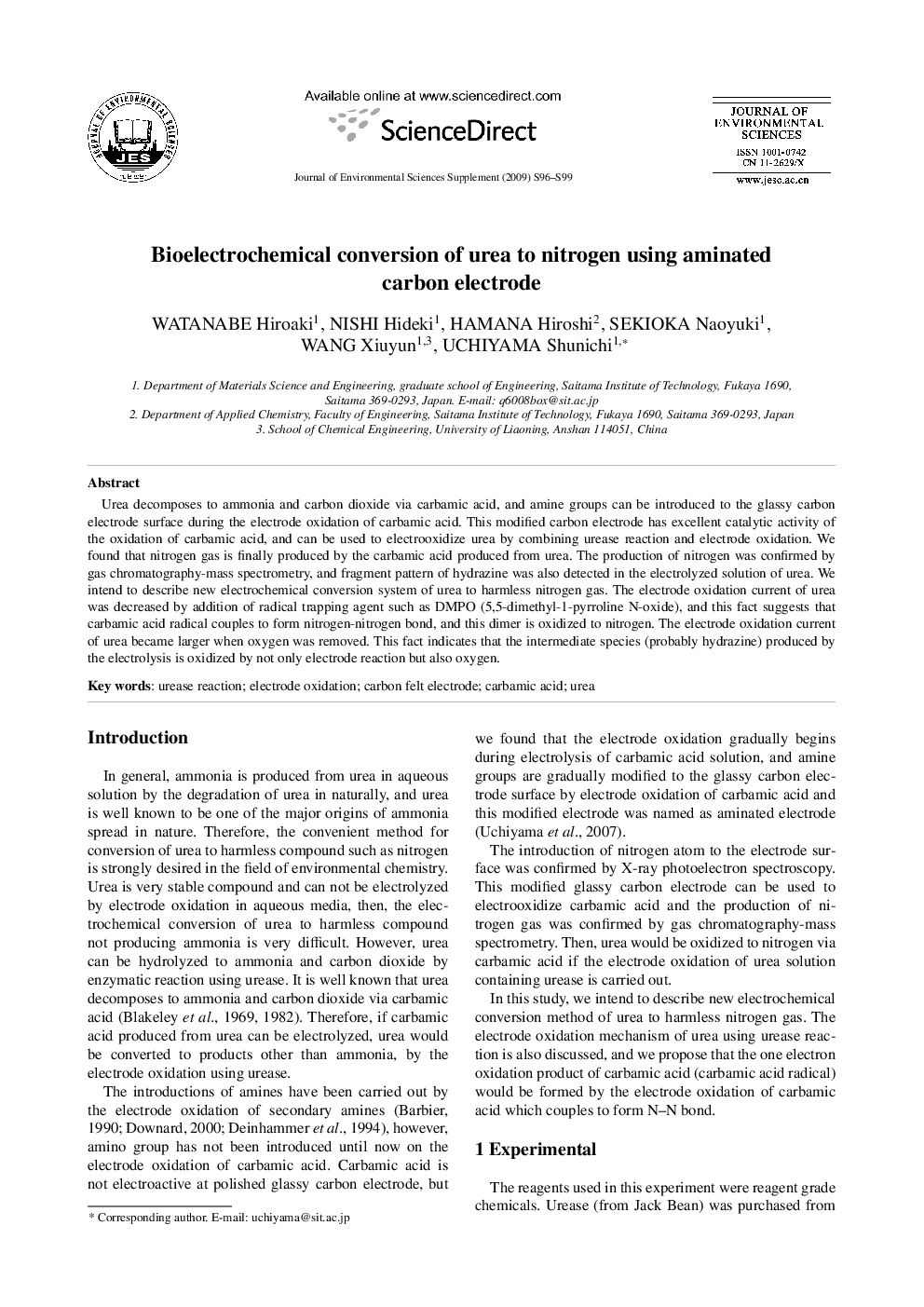| کد مقاله | کد نشریه | سال انتشار | مقاله انگلیسی | نسخه تمام متن |
|---|---|---|---|---|
| 4456441 | 1312556 | 2009 | 4 صفحه PDF | دانلود رایگان |

Urea decomposes to ammonia and carbon dioxide via carbamic acid, and amine groups can be introduced to the glassy carbon electrode surface during the electrode oxidation of carbamic acid. This modified carbon electrode has excellent catalytic activity of the oxidation of carbamic acid, and can be used to electrooxidize urea by combining urease reaction and electrode oxidation. We found that nitrogen gas is finally produced by the carbamic acid produced from urea. The production of nitrogen was confirmed by gas chromatography-mass spectrometry, and fragment pattern of hydrazine was also detected in the electrolyzed solution of urea. We intend to describe new electrochemical conversion system of urea to harmless nitrogen gas. The electrode oxidation current of urea was decreased by addition of radical trapping agent such as DMPO (5,5-dimethyl-1-pyrroline N-oxide), and this fact suggests that carbamic acid radical couples to form nitrogen-nitrogen bond, and this dimer is oxidized to nitrogen. The electrode oxidation current of urea became larger when oxygen was removed. This fact indicates that the intermediate species (probably hydrazine) produced by the electrolysis is oxidized by not only electrode reaction but also oxygen.
Journal: Journal of Environmental Sciences - Volume 21, Supplement 1, 2009, Pages S96-S99